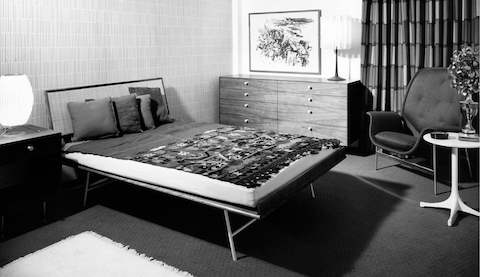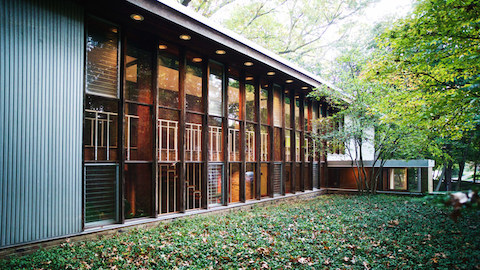It’s easy to predict the future, but nearly impossible to get it right. Yet time and again, designer George Nelson did just that. In 1945, George Nelson and Henry Wright authored Tomorrow’s House—a kind of guidebook for progressive homebuilders. While it chronicles each element of the house—with chapters illustrating new concepts in living, dining, kitchens, bath—what stands out today is Nelson’s almost counterintuitive approach. Rather than dwelling on form or aesthetics, for example, in the “Sleeping” chapter Nelson writes, “Let us take time out and look at the bedroom, not as a room with some standard furniture in it, but as the area in which a great variety of activities takes place. People read in their bedrooms, they dress there, occasionally eat there, frequently smoke, and sometimes write; they may listen to the radio, and they certainly make love.” The message becomes clear: a house of tomorrow should focus on the reality its inhabitants faced.
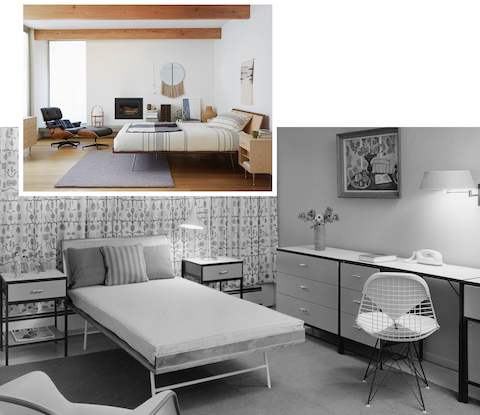
While the idea of designing for human experience may seem obvious now, considering the time, place, and social context in which Nelson was working, it seems especially prescient. In 1953’s Living Spaces, the architect-turned-furniture designer recounts meetings in the early 1940s with a young, “very, self-consciously avant-garde group” of designers, who were “deeply concerned with the social, political, economic, and esthetic problems facing the architect.” He makes a note of the rooms that these meetings are held in and writes, “What interests me in retrospect is that these rooms, while of course designed to function as rooms, were set up primarily to function as manifestoes. In the raging battle between Modernism and Conservatism… without these identifications nobody could have told which side one was on.”
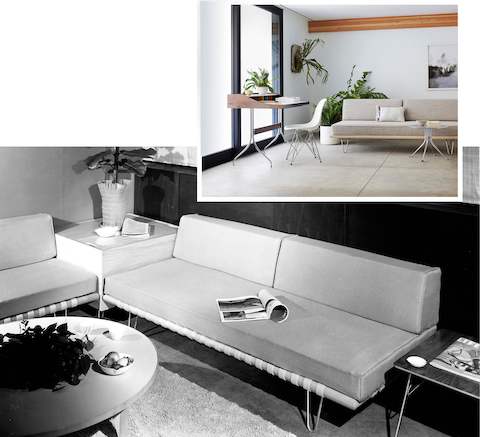
In an era when ideology served as such a potent force in moving design forward—and making a place for designers in the cultural and corporate landscape—Nelson seemed wary of such constraints. This overarching skepticism becomes even more remarkable when one considers Nelson’s role in exposing American audiences to the European Modernism of the Bauhaus and Le Corbusier a few decades earlier in the pages of Pencil Points magazine. With a remarkable tendency to contradict, or even disprove his former self, throughout his career Nelson moved further and further away from design as an ideological or aesthetic conception to a more common sense, needs-based, solution-oriented view. No matter how cantankerous he might come across in print, it’s clear that Nelson’s goal was always to advocate for greater empathy—for spaces, for the environment, for culture, and ultimately for people. Karen Stein, executive director at the George Nelson Foundation, sums it up succinctly: “He was a person who liked ideas but also a person who liked things and things that worked. So if a room wasn’t designed to accommodate the life that went on inside of it, that would not be suitable to his frame of mind.”
“George Nelson was an embarrassment to design writers—a practicing designer who wrote better than any of us did. And if the writing stood out more than some of the individual designs, that was not unreasonable, for his major design achievement was the quality of his thinking, in a field where useful thinking is rarer than useful products. ”
— Ralph Caplan, 1986 STA Design Journal
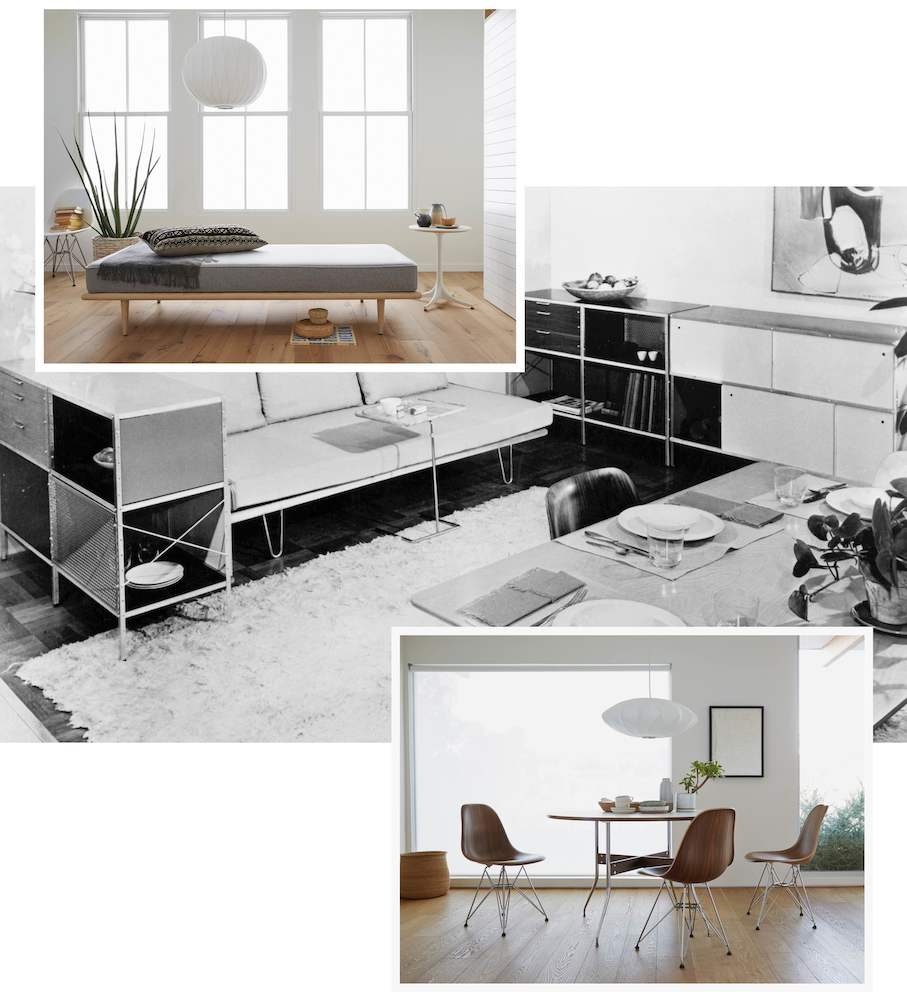
“He had various careers—a journalist, an architect, an industrial designer, a creative director, a teacher—and many of them went on concurrently,” Stein says of Nelson’s multi-faceted persona. “He was writing about things that were happening, changes in the modern way of life, and all of that then went into his examination for furniture.” This panoramic vision, coupled with a keen ability for sniffing out problems and a creative approach to offering solutions, is likely why so many of Nelson’s designs have endured the test of time. Are today’s houses any less problematic than those of the 1940’s? Have the issues surrounding storage, dining, or sleeping evolved so significantly? If anything, they’ve become more needlessly complicated or thoughtlessly redundant, and offer a newfound clarity to Nelson’s human-centered solutions. In the decades that have passed since Nelson put pen to paper, his words offer a similar sense of clarity—ultimately revealing a point of view on design that will never go out of style. Why? As he tells us in Living Spaces, “The thing that makes design so interesting is that the factors in its creation are so inconsistently and wonderfully human.”
